“There is a lot of talk about creating customer-centric organizations but not nearly enough action,” a recent Forrester report said.
Forrester described 2018 as “a year of reckoning” for many businesses:
“Unmet customer expectations are resulting in churn; the lack of digital transformation gains is translating to loss of market share; industry lines that protected some are crumbling; and longstanding, durable business models are failing.”
The sense of urgency for digital transformation is overwhelming and “customer-centricity” is often described as a key part of that strategy. And yet, there’s a lack of understanding about what being “customer-centric” actually means, or where to start.
The Forrester report called out that customer experience has flat-lined.
“CX quality plateaued or declined for most industries and companies. Why? CX initiatives tackled low-hanging fruit to put early points on the board, and most CX initiatives had too little clout to force meaningful operational change.
“Customers’ expectations will outpace companies’ ability to evolve or invent experiences, and the deferred transformation in 2017 means that companies can’t adjust fast enough or well enough.”
For all the hype, putting the customer at the core of the business is a challenge. It’s not just a technology focus. It’s an organizational and cultural effort.
Here are a few related cartoons I’ve drawn over the years.
“Customer-Centric” January 2017
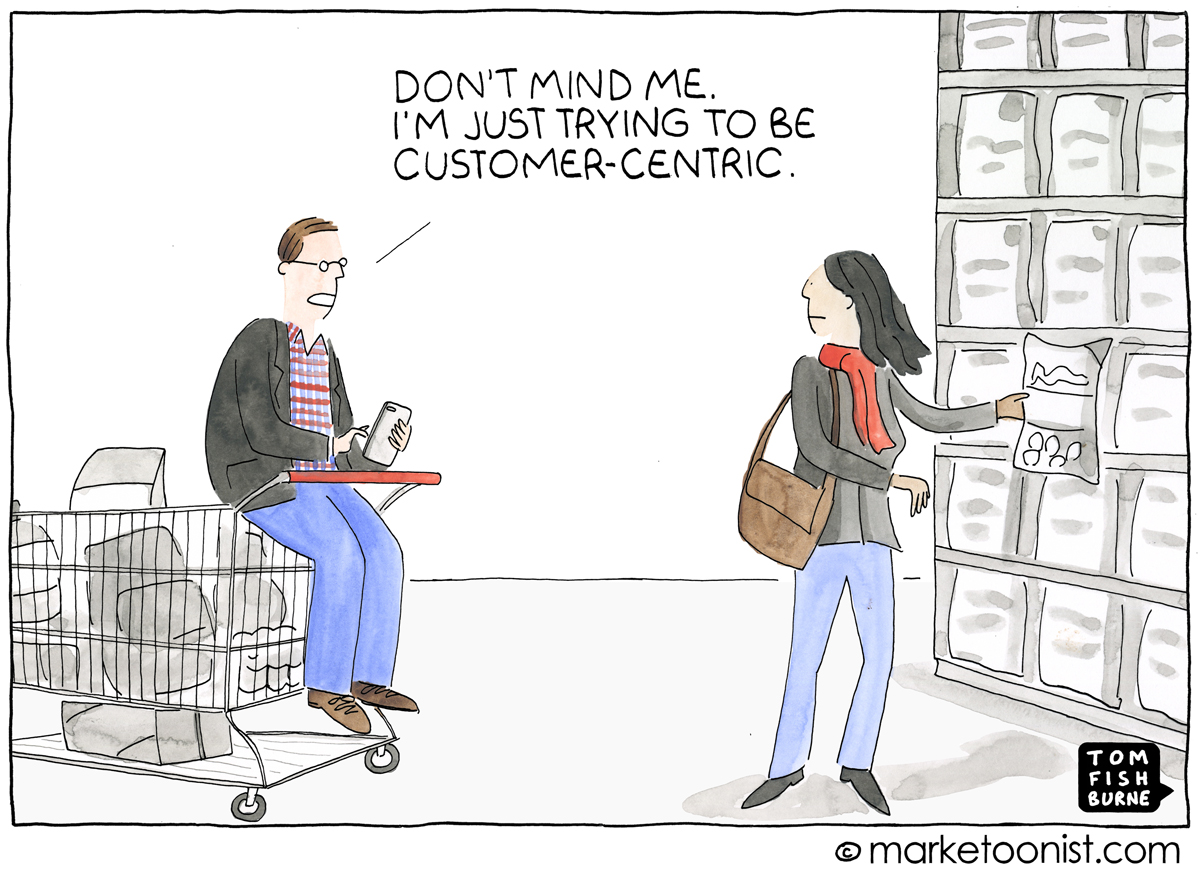
“Tracking the Customer Journey” July 2016
![]()
“Customer Journey Mapping” April 2016
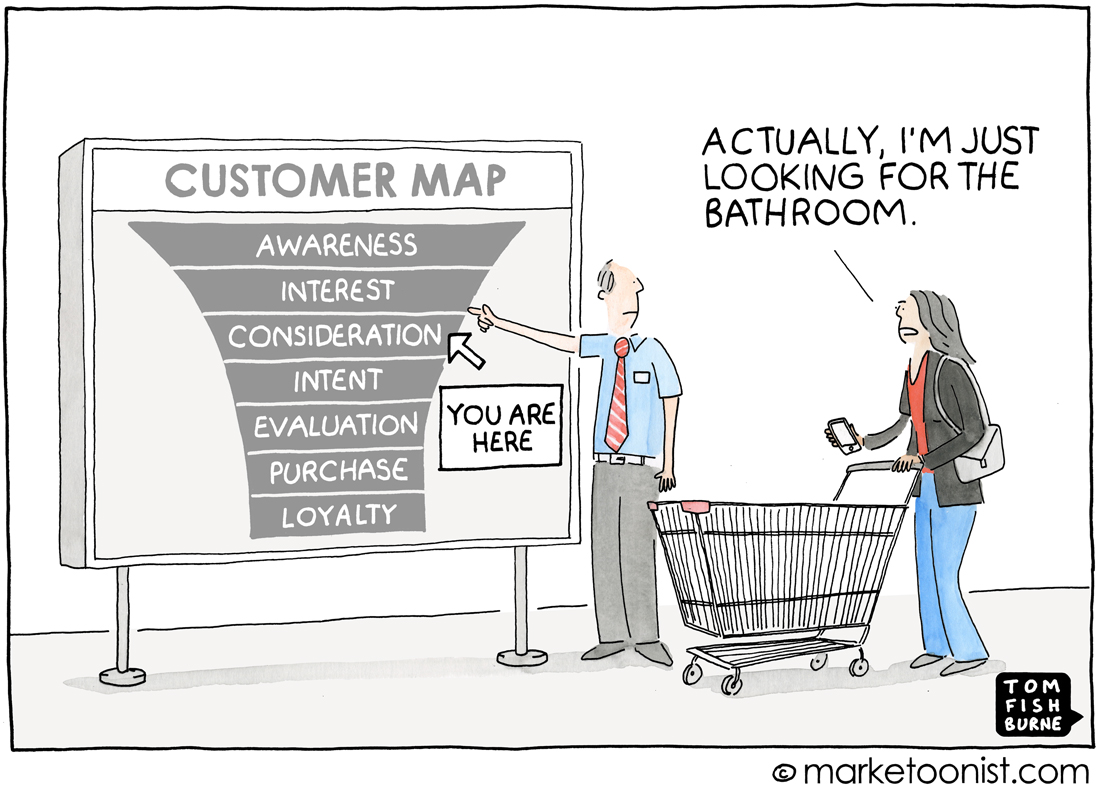
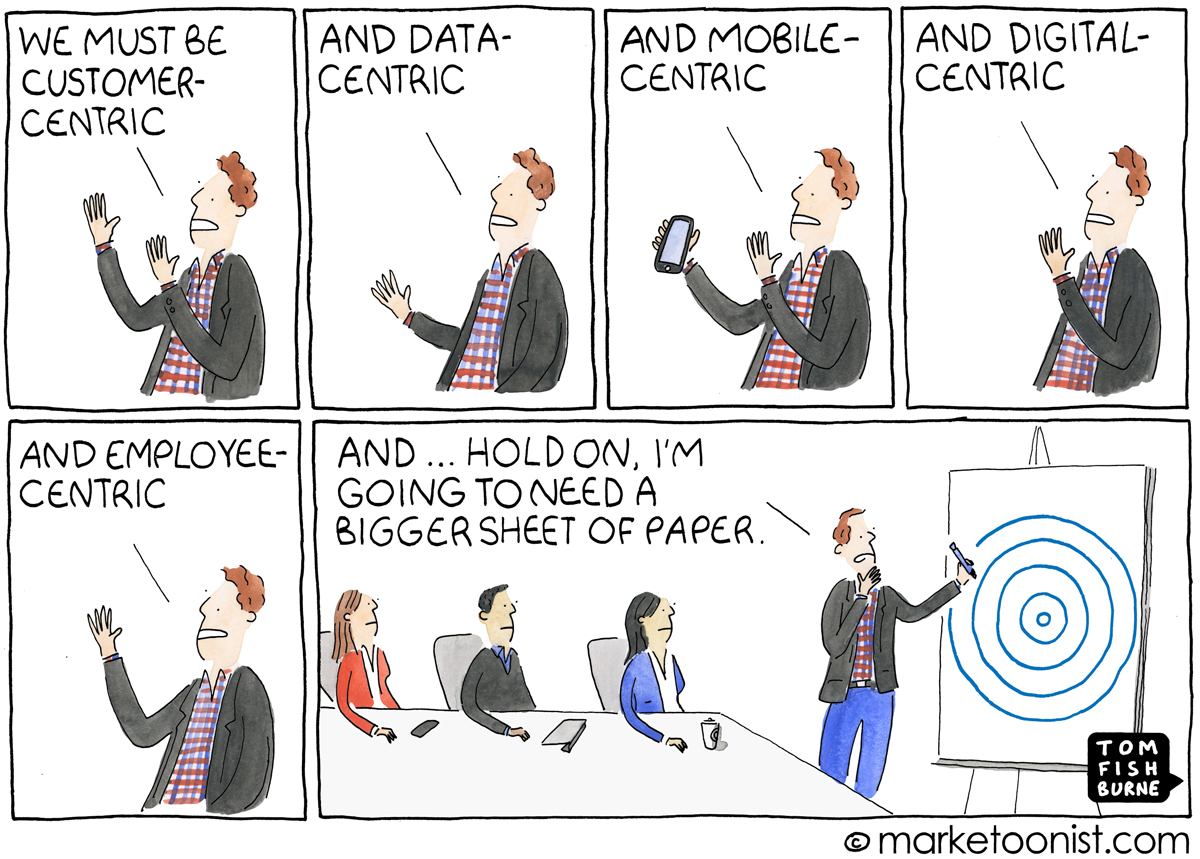

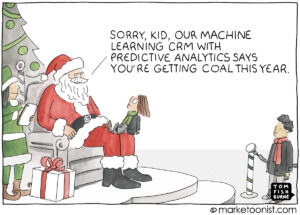
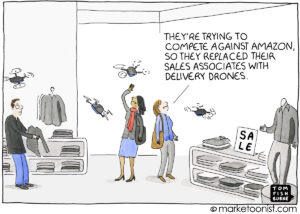
Robert Dundon says
Great Post! Tried clicking the link and it didn’t work. Realized it’s linked to a local directory. Do you have the web link?
tomfishburne says
Sorry about that! I just corrected the post. The link to the Forrester report is here: https://go.forrester.com/wp-content/uploads/Forrester-2018-Predictions.pdf